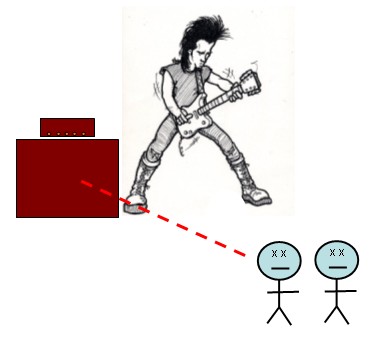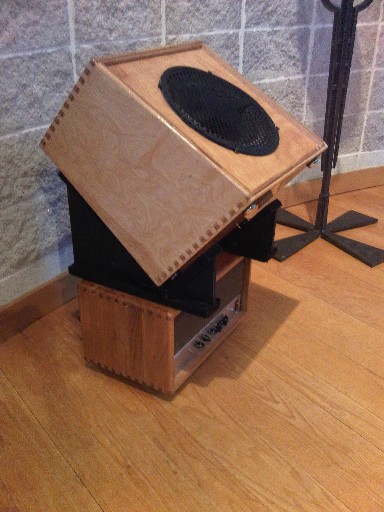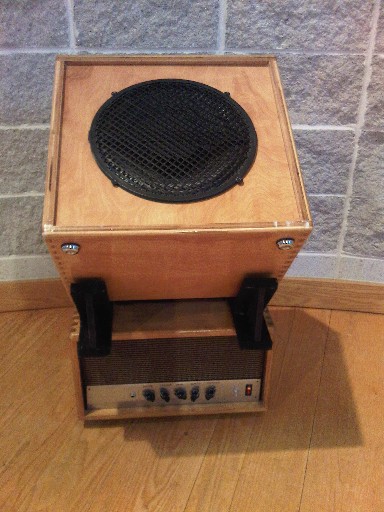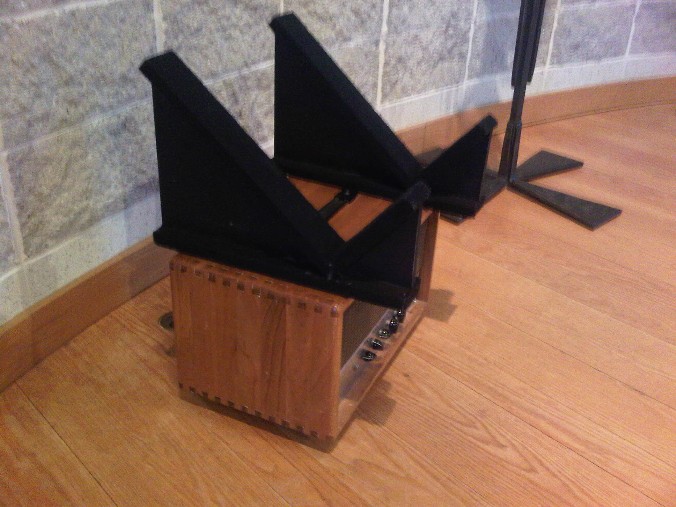A
perennial problem with electric guitarsts is being too loud. Sometimes
it's just the player not understanding how to balance with the band.
But often it is due to amp selection, positioning and directionality.
This is particulalry a problem in worship band settings, which is the
place I do most of my playing these days. Many players have
transitioned to using amp modeling devices like a POD, but some of us
would still really like to have an AMP! There is something organic
about an amp and speaker that is different than a modeler (unless you
spend a gazillion years dialing in the modeler). Plus, a lot of us
guitarists like to use a bunch of gear - pedals, different amps and
speaker cabinets, etc. With an amp, you can pick your gear for the day, plug in and have
"your" sound. So, what to do about the volume?
First step: manage your amp's output. There are a number of ways to do this.
- Use
a lower powered amp and/or put in power tubes such as the 6V6 or EL84.
Generally, 5 watts of clean power is definitely enough for a worship setting,
and as little as 1 - 2 watts of power for overdriven amps is plenty
loud.
- Use a cabinet with a single or at most a double speaker. More speakers = more volume in most cases, and 4 x 12's are loud. An AX84 1x12 design can get
you that 4x12 sound in a smaller, quieter package.
- Turn down your master volume. On my P1eX based amp, this works well enough, though there is some tone change.
- Install
a voltage control circuit that allows you to scale voltage to the whole
amp. Examples are Dana Halls VVR and London Power's Power Scaling. A
lot of people are liking these now and I just put a Dana Hall VVR board
in my Stratifier amp. It is awesome!!
- Use a speaker attenuator such as the Weber units, Dr. Z Brake Lite or THD Hot Plate or the like.
Second
step: Use an amp stand!! Point the sound at your head, not at the
audience. Mic the amp and strive to have most of what the audience
hears come from the mains, while the direct amp sound is your "monitor".
What's
going on here is this. Guitar amps are very directional at higher
frequencies. High frequencies are what gives your sound definition and
you want to hear them. But, the typical problem is that with an
amp sitting on the floor all the high frequency stuff is blasting past
your kneecaps and annihilating the people in the front rows of the
audience. Their ears are bleeding but you don't hear yourself well
enough.

I
have had every guitar player in our worship band start using some kind
of amp stand that directs the amp's sound at the player's head. It has
worked miracles for us with our stage volume and mix. Plus, this way we
all get to use our amps, which we love. My own stand is home
built and is funny in that I set my amp up upside down - the amp head
goes on the floor, the amp stand sits on top of the amp head, and the
speaker cabinet goes on top of that, angled back to direct the sound
towards my head. It was so simple to build but has just worked great
for me.
It is basically just two pairs of triangles cut from particle board and
then some
pieces of 1 x 3 screwed and glued to the edges. I covered the 1 x 3's
in black felt using a little white glue to attach it and painted the
particle board triangles black.



Third
step: Think of the mix. My words to players are that they should be
able to hear everyone in the band. If you can "hear yourself just well
enough" but still hear the other players then you are probably the
right volume. If you are thinking, "wow, my sound is great and full and
driving this band" then you are probably too loud :-) One good thing
about playing in a worship band is that it is not about our individual
glory as players. We need to do whatever is required to present a great
musical offering to our congregations, even if it means selecting a
smaller "tone generator amp", turning down a little or using an amp
stand.




